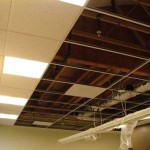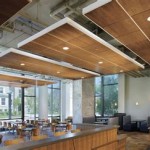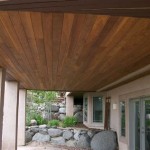Why Do Old Buildings Have High Ceilings?
When admiring the majestic architecture of old buildings, one of the most striking features is often their soaring ceilings. These lofty heights, far exceeding those in modern constructions, evoke a sense of grandeur and spaciousness. But why did architects of the past design buildings with such high ceilings?
There are several compelling reasons behind this design choice:
1. Natural Ventilation and LightingBefore the advent of mechanical ventilation and artificial lighting, high ceilings were essential for maintaining a comfortable indoor environment. The large volume of air allowed for better air circulation, reducing the risk of stale or stuffy conditions. Additionally, the height of the ceilings allowed more natural light to penetrate the building, reducing the need for candles or oil lamps.
2. Prestige and StatusIn many societies, high ceilings were a symbol of wealth and status. The more expansive the space, the more impressive and opulent the building appeared. Grand halls and reception areas with high ceilings were reserved for the most important and influential members of society.
3. Structural Strength and Fire ResistanceHigh ceilings contributed to the structural stability of buildings. By distributing the weight of the roof and upper floors over a larger area, the walls and foundation could be made thinner, resulting in a more efficient and robust structure. Moreover, the increased air volume between floors acted as a thermal barrier, slowing the spread of fire and providing more time for occupants to evacuate.
4. AcousticsLarge, high-ceilinged rooms have excellent acoustic properties. The reverberation time is longer, creating an echo that enhances the sound of music and speech. This made them ideal for concert halls, theaters, and churches where clear acoustics were paramount.
5. Ecclesiastical SymbolismIn religious architecture, high ceilings often carried symbolic significance. They represented the vastness of heaven or the presence of a higher power. The soaring spires and vaulted ceilings of cathedrals and churches were meant to inspire awe and devotion.
While modern construction methods and materials allow for buildings with lower ceilings, the timeless appeal of high ceilings remains. They continue to be used in certain architectural styles and for specific purposes, where they contribute to both aesthetic and functional benefits.

High Ceilings In Old Houses Looking For Documentation Page 2 The Historic District

Why Do Old Buildings Have High Ceilings Quora

Why Do Older Commercial Buildings Roughly 1880 1920 Have Such High Ceilings What Purpose Did They Serve R Askhistorians

How To Take Advantage Of High Ceilings In Renovations Archdaily

How To Take Advantage Of High Ceilings In Renovations Archdaily

Why Do All Of The Old Spanish Buildings Have High Ceilings No Windows And Vents Over Doors Let Bestourspr Show You Sights Share History With Picture

Why Do Old Houses Have High Ceilings Village Cottage

Why Can T New Buildings Be As Nice Old Spur

How To Take Advantage Of High Ceilings In Renovations Archdaily
Why Are House Ceilings So Low In England Quora
Related Posts








